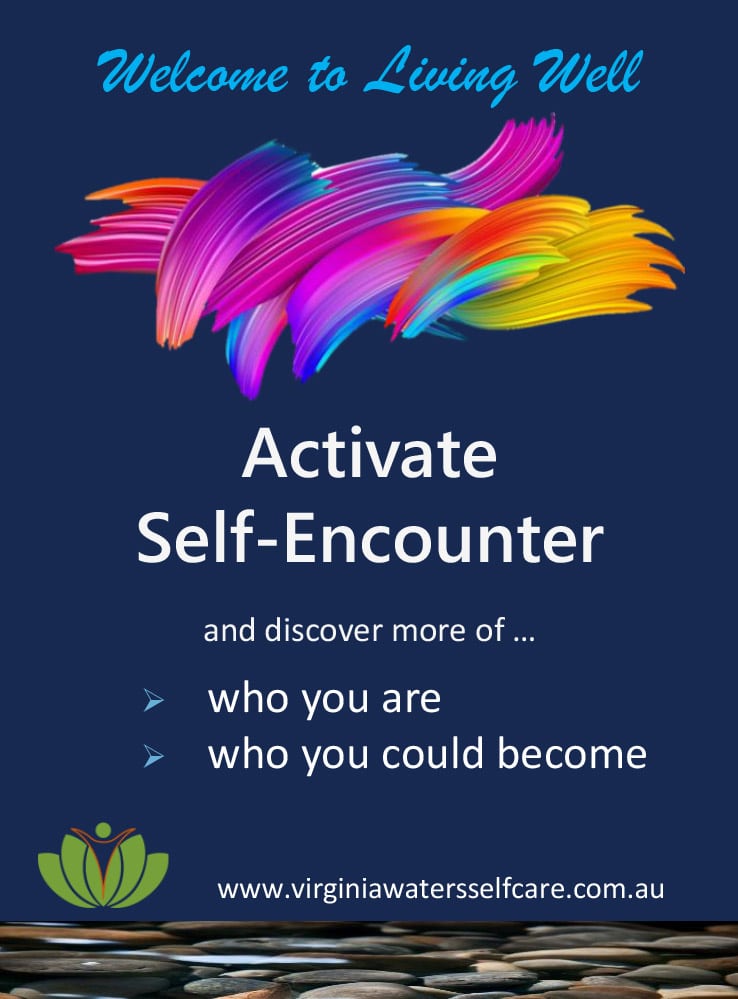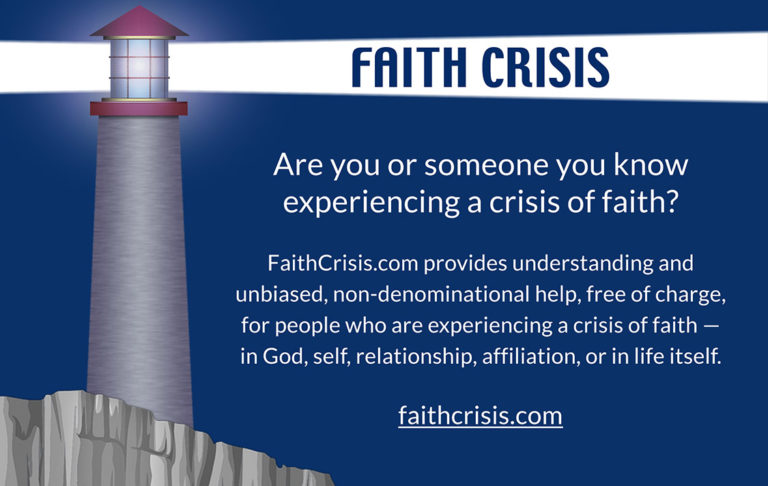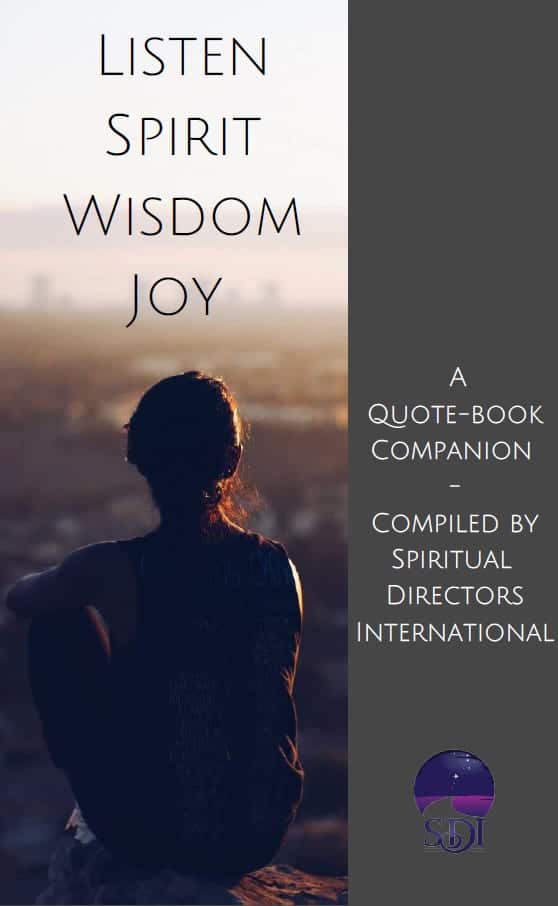After five years as Director of Content, I am parting ways with SDI. I am deeply grateful for the opportunity to serve our extraordinary community of deep listeners. I offer my blessings and my thanks to you all – for the tender, anchoring and ultimately, liberating space you hold for others every time you listen to them. Your open hearts embody and encourage presence. Your companionship reminds us that we have access to connection, meaning and purpose – here and now, in any moment, always. What a gift you bring. Please continue to share it whenever and wherever you are able. I love you all.
– Steven Crandell
When I was a freshman at university, I felt deep-down that learning itself was a calling. But my ego refused to accept this and pushed me to use learning as a lever to achieve other objectives that were easier to equate with recognition and money. It has taken me this long – I’m now 63 – to discover my intuition as a young man was right. Learning is enough. It is abundance. And the most profound learning we can do is within. This kind of learning is itself a spiritual practice. It is also a metaphor for how to live our lives fully.
I have spent the last five years of my working life as the Director of Content for SDI, Spiritual Directors International. We are an educational nonprofit serving 6,000-plus spiritual directors and spiritual companions in 42 countries around the world as well as all the people they companion. Spiritual companionship is present in all religious traditions. It also serves those people who honor multiple traditions or none. Spiritual directors hold space for others with deep listening, respect for the agency of the other, contemplative practice (prayer, meditation, nature, there are many ways to connect to the infinite) and open-ended questions that help others find their own life-giving questions. The goal is to support others as they find their own path to wholeness. As they learn.
I believe the key to such life learning is contemplative practice within a companionship model. Some folks think of the lone monk isolating for long periods when they think of prayer or meditation. This ironically fits the modern American tendency for do-it-yourself solutions. And contemplation of any kind is good. But it misses the community piece – which brings the wisdom and love of contemplative practice into our connections with other humans and all other beings.
I believe that the approach and skills of deep listening can transform all relationships. What if each person we meet offered us a chance to give and receive hospitality? In real-time. In every moment. What if we could all listen each other into self-discovery? What would that mean for families, neighborhoods, communities, nations?
This is an aspiration, of course. But it is also a “concrete” tool for ordinary folks who feel isolated and depleted – not just by the pandemic – but by their day-to-day existence. How might they bring joy, rapture, insight, fulfillment, meaning into their lives?
Finding a daily practice that fits their faith – or their spiritual fluidity or their spiritual independence – is key. But equally important is finding someone that can walk beside them – someone who can accept them as they are and also gently challenge them to listen to their deepest truths.
In the rush of life that envelops most people these days, spiritual directors and spiritual companions are door-openers to the deepest wisdom of all – that which people hold in their hearts already, that which they can discover for themselves.
Blessings to all those who read these words.
May you grant yourselves permission to make learning your calling.
And may you all find a companion to listen with you as you find your way.
Love to you all,
Steven
PS. Please share this with at least one person you know. (You can download this issue as a PDF and email it!)
Below is some background if you, – or they – would like to learn more:
Here is the SDI website: https://www.sdicompanions.org/
Here is our Find a Spiritual Director or Companion Guide. It’s a way anyone can find a spiritual companion that might fit their interests – and it’s free: https://www.sdicompanions.org/find-a-spiritual-director-companion/
Nota: Connections is an SDI member benefit publication, however we felt that the specific content of this issue should be shared with a broader audience, thus we are offering it to everyone for free!
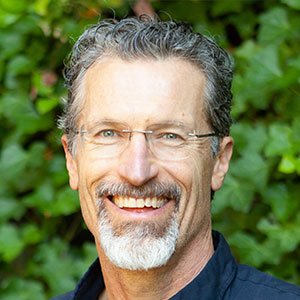
Steven Crandell
served for 5 years as SDI’s Director of Content, guiding SDI’s storytelling and growing our community — on our website, our blog, social media, in our webinars and by supporting our SDI Communities program. He sees spiritual companions as the catalyst in an ongoing “contemplative revolution.” His unofficial job title was “Director of Encouragement.”
A Poem of Invitation –
For All Deep Listeners and All Those You Serve
Listen:
Can you hear it?
There in your heart.
A vibration.
A resonance.
A song.
It heralds a fresh start –
a greening, a blossoming,
an awakening.
Be still:
Can you feel it brush gently past your skin –
like the first warm breeze of spring after the privations of winter?
It’s the invigorating whisper of hope–
an invitation to begin exploring again
after a season of suffering, darkness and seclusion.
Open your heart:
Imagine the transforming connection you feel when you connect with God or the Universe,
When you hold space for another
human being’s self-discovery,
When you no longer feel separate from love.
That’s it.
The alignment. The knowing.
The oneness.
That’s your destiny.
–Steven Crandell
Bearing Witness: Trauma and Referrals in Spiritual Direction
By Rev. Dr. Shannon Michael Pater
Trauma activation warning: this article discusses suicide.
This article was reviewed by the person whose story I tell and is shared with their permission.
In 2018, a constellation of anniversaries ending in fives and zeros prompted a period of significant discernment that led me to set out on a long pilgrimage to India. In January 2019, I sold, donated, and gave away most of what owned me and was welcomed in Mumbai by a circle of friends.
Settling in was overwhelming and joyous. I had served my last congregation for 10 years; leaving this place of familiarity had brought a renewed sense of homecoming. I hosted house parties that flowed freely with poetry and playfulness. The days and nights were full of life for all of us.
Then, unimaginable tragedy came.
The husband of one in my circle of friends died by suicide. It crushed us all and sent the surviving husband to a place of utter desolation. He wanted to follow his husband in death.
I have accompanied many in pastoral care and counseling, chaplaincy, and spiritual direction since the mid-1990s. I have born witness to the many ways our souls fray on the edges, and the seams of our hearts unravel. I completed a Clinical Pastoral Education residency in psychiatry, have two graduate degrees from seminaries, a doctorate in psychology, and plentiful post-doctoral training in trauma. I say all that only in order to say this: I felt inadequate to witness the husband’s trauma and suffering and utterly stretched to the limits of my skills.
But he picked me. He chose to trust me with the complexities of his agony because he felt no one else could hold it with him. I certainly was humbled; but mostly, I was terrified. I was not at all certain that even the fullest deployment of my training would be sufficient to hold a safe space and, should I falter, I was scared that he might die.
Yet, I went where he asked me to go.
Traumatized parts of me that I had long forgotten were activated; wounds from childhood and adolescence that were sutured in my heart were reopened. I would weep and tremble after our sessions. From India, I was regularly in touch with my spiritual director and supervisor in the United States. And in those connections, I was given the nourishment and support to provide the level of spiritual direction/companionship that was required to hold the sacred space.
One of the most common questions I’m asked about trauma-informed spiritual direction is around concerns of doing harm. There are a cluster of questions, actually, including these:
- “When/how should I make a referral to a therapist or doctor?”
- “How can I be sure that I won’t re-traumatize them?”
- “When does spiritual direction become therapy?”
- “How do I stay in my lane?”
These are helpful questions — ask them often! But when investigating them, remember to hold in the messy mix not only the spiritual directee, but this important truth – that the parts that are being revealed in spiritual direction have chosen you.
Very often I think we refer someone “out” of spiritual direction to a therapist or other relationship because we are afraid of our own trauma that is being activated.
I want to posit a supposition for your consideration: spiritual direction/companionship can be and very often is an adequate, helpful, and transformative response to trauma. Whatever else trauma is, it is a spiritual wound. Spiritual direction might be what the directee needs y you might very well be the person to provide it to them.
I’m making my supposition on several presuppositions. First, that you have received training that included supervised practicums in spiritual direction. Second, that you regularly receive spiritual direction/companionship. And, third, that you regularly receive qualified individual supervision.
I have and do refer. But I do not do so in my moments of terror and feeling inadequate – especially after a directee has become highly dysregulated (e.g. moments of rage, weeping, desolation, or other “big” feelings). I sometimes have “safety agreements” with a directee who agrees to call for help, 9-1-1, if need be, if they believe they will do harm to themselves or others. I also regularly, formally and informally, check- in with directees to see if they are receiving from our relationship what they hope and need. Referrals are sometimes raised by them in this context and those are the safest moments to explore options.
Most importantly, I take my fears to spiritual direction for my own health, growth, and restoration and I support my scope of practice with supervision and continuing education. I need support in supporting others; my scope of practice needs support in order to be sustainable.
My friend-turned-directee eventually sought the medical care and therapy he needed to explore and restore his devastated life. It is very unlikely that he would have done so if I had pushed him there. I had to walk with him into the scariest place of his life and mine.
Spiritual direction is like a pilgrimage: you never know what will happen when you set out; but that unknowing is part of the journey.
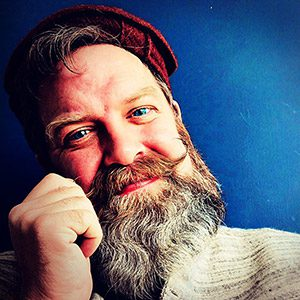
Rev. Dr. Shannon Michael Pater
The Rev. Dr. Shannon Michael Pater, M.A.R., M.Div., Psy.D. | E-RYT 500, offers trauma-informed spiritual direction, supervision, and an Apprenticeship in a Trauma-Informed Scope of Practice. His long pilgrimage to India turned out to be nearly three years, 21 months of which was spent as an international COVID refugee in a small mountain village in the Himalayas with the Dalai Lama. He led the workshop “Trauma-Informed Spiritual Direction: Restoring the Somatically Sacred” at the SDI Conference Engage 2022 in Santa Fe. To contact him or for more information about his practice visit noticethejourney.com.
Everything is a Prayer - Women Centered, Interfaith Spiritual Counseling
By Rev. Nancy Dominique Dessables, LMSW
As a recent graduate of the One Spirit Learning Alliance Interfaith Seminary in New York City, I often reflect on how fortunate I am to have studied with a diverse, compassionate, and knowledgeable group of scholars, deans, supervisors, and fellow students. I call everyone I met at the One Spirit Learning Alliance – “teacher.” But my first and most significant spiritual teacher is my mother, Yola Edith Edouard Dessables.
No matter who we are and what our current connection is to a biological mother, we all emerged into this world from the warm, billowy, aqueous cocoon of a womb. Remarkably, I have a cellular memory of being inside my mother’s womb, where I first experienced the sacredness of simply being alive. Everything I have experienced in that first molecular memory to my present-day circumstances has been a sacred journey birthed, nurtured, and reared from the woman I call mother.
My mother, who is the inspiration for my spiritual counseling practice known as Yola’s Child, was the epitome of feminine divine power, fearlessness, gratitude, and surrender. Born in Petit Goave, Haiti in 1928, she lived a humble life where she found joy in simple everyday pleasures such as the coolness of a Caribbean Ocean breeze and the sweetness of newly ripened mango. Hers was a life of material poverty and spiritual wealth. My mother taught me to listen to my instincts, trust my heart, and never give up on my dreams.
My biggest dream was to become a social worker. Yola was my biggest cheerleader and the person who ushered me into the social work profession. I fondly recall the day she accompanied me on a New York City Number 1 subway train to my first social work open house.
My dream came true in 1988 when I graduated from Columbia University with my master’s degree in social work. In the years that followed, social work became my greatest passion. I emersed myself in the noble profession that instantly provided me with a conduit for serving others, and today I still proudly call myself a social worker.
As a devout practicing Roman Catholic, my mother adored the image of the virgin mother and child known as Our Lady of Czestochowa or The Black Madonna. “Images of this famous Byzantine icon were most likely brought to Haiti by Polish soldiers sent by Napoleon Bonaparte to quell the Haitian slave rebellion. Polish soldiers remained in Haiti following the rebellion, and with them remained the sacred icon of the Madonna of Czestochowa.” (Oleszkiewicz-Peralba, 2002, pp. 109-110). The Black Madonna is also the African Goddess Elizi Danto in the Haitian Voodoo spiritual tradition. Haitian people revere her as a protector and source of strength.
Our Lady of Czestochowa became my source of strength as I, like many of us, found myself navigating the highs and lows of life. One Spirit Learning Alliance further widened my perspective of what spirituality could mean for myself and gave me a greater appreciation of what spirituality meant for others. This included, among other things, greater awareness of an entire pantheon of cross-cultural feminine divine archetypes and spiritual figures such as Kali, Kuan Yin, Hecate, Mary Magdalene, Lilith, The Blessed Mother, Yemaya, Ochun, and Gaia, to name a few. I discovered that these and other Goddesses offer profound and often overlooked gifts of wisdom, courage, guidance, and healing. Living in a world where God is often gendered as masculine energy, many people yearn for greater connection with a more feminized image of the Divine. Sacred femininity brings a kind of healing balm to the world that includes work around compassion, forgiveness, grief, self-care, sensuality, transformation, and power.
Drawing from the memory of my mother as a source of inspiration, I strive to include feminine divine energies into my spiritual counseling practice wherever helpful and appropriate. I find that counselees, especially those who identify as female, are hungry to engage with sacred feminine figures that resemble their own body images, cultures, and experiences.
In my work as a spiritual counselor, others often ask me where my training as a social worker fits in. I believe that social work complements the work I do as a spiritual counselor in many ways. The social work profession has trained me to view the Whole Person, and my training in spiritual counseling has taught me to View the Soul in The Person. Both approaches are necessary, and both go hand in hand.
A spiritual tenent I hold to be true is the interconnectedness of all things. We are all a part of a larger intelligent divine system. Everything is sacred and everything is prayer. All life is a conversation with the Divine, and all life is a sacred dance.
With this in mind, our greatest joys, our most seemingly mundane tasks, our everyday routines, walks in nature, acts of kindness, and the process of living life itself are all prayers. Even the most difficult moments in life are prayers. Our challenges are sacred opportunities to learn, grow and transform into something new.
Perhaps one of the greatest gifts of the Feminine Divine is her symbolic cycle of birth, life, and death that is continuous in the universe and synonymous with Mother Earth. The Feminine Divine reminds us that all life is a process of arriving, living fully, and ultimately letting go. Perhaps this is the greatest prayer of all.
I am grateful to both my parents, John and Yola Dessables.
May your loving and supportive energies be part of the cosmic cycle of transformation that is all life.
References
Bashford, S. (2018). You Are a Goddess-Working with The Sacred Feminine to Awaken, Heal and Transform. Carlsbad, California: Hay House.
Oleszkiewicz-Peralba, M. (2002). The Black Madonna in Latin America and Europe. Albuquerque: University of New Mexico Press.
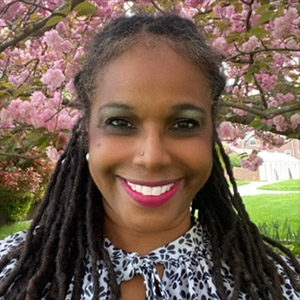
Rev. Nancy Dominique Dessables, LMSW
obtained her Master of Social Work degree from Columbia University. She is a graduate of both the One Spirit Learning Alliance Interfaith Seminary and Interspiritual Counseling programs. Rev. Nancy was a participant in The Harvard University School of Divinity’s Making Change Program-2022. Nancy’s professional work experience spans the fields of aging, employment, early childhood, health care, and higher education. She currently manages field placement for human services students in a well-respected New York City-based university system. She is committed to social justice, BIPOC, indigenous & ancestral healing, and DEI [Diversity, Equity, and Inclusion]. Her spiritual counseling site is here: https://www.yolaschild.com/
Key Tips on How to Develop a Spiritual Direction Practice
By Dr. Bruce Tallman
The following tips have been excerpted from Dr. Bruce Tallman’s book “Finding Seekers: How to Develop a Spiritual Direction Practice from Beginning to Full-Time Employment.” He will be one of the presenters in our upcoming webinar series Making a Living as a Spiritual Director 3 – Growing Your Practice.
To make your spiritual direction practice soar, please consider the following action steps:
- Prayer: If Spirit does not build the house, it won’t get built. Pray every day that God sends you clients. Thank your Higher Power for the clients you already have and any new ones. Pray daily for the spiritual growth of your clients. At the end of each session, tell your directee that you will keep them in your prayers and ask them to pray that your practice goes well.
- Have a written mission statement for your practice that is meaningful to you and energizes you. Have a plan for fulfilling your mission. Pray your mission statement and plan every day. Tell others about your mission.
- Know Thyself and Thy Work: Know your strong points as a spiritual director or companion and what makes you unique (your niche). Make sure you can clearly explain your basic message – what you do and the main benefits of your services – in 30 seconds or less.
- Fees and other options: Know what your fee needs to be for you to survive. Know how to raise your fee without losing clients: give three months notice and use small increases. Have different affordable packages people can choose from if they can’t afford your fee: group workshops, group spiritual direction, etc.
- Expense Tracking: Keep track of all expenses and income. Know what expenses you can write off.
- Quick Response: Get back to people who leave a voicemail, email, or text as soon as possible – within 24 hours. If someone is ready to try spiritual direction, try to meet with them the same day (people can change their minds quickly). Be flexible with your appointments. Be prepared to work evenings and Saturdays at first.
- First Visits: The first two visits are the most crucial. Hospitality is key.
- Build Slowly: Become a full-time spiritual director slowly. Keep building a part-time practice until ready to go full-time. It may take 3 to 5 years. It is usually necessary to have some kind of a part-time job to create some cash-flow while you are building your practice. Have several sources of income besides spiritual companionship: writing, workshops, retreats.
- Skills and Support: Keep your skills up with workshops, books, journals. Subscribe to Presencia, the journal of Spiritual Directors International, and read a page or two a day. Set up a spiritual directors/companions support group in your area. Pray together, do peer supervision, swap ideas on how to run a practice.
- Target marketing: Identify the type of ideal client you want to work with. This focuses your search. Develop an email list of potential clients and email them spiritually helpful ideas regularly.
- Focus on Client Benefits: give clients what they want, not what you think they need. For example, they may want to have more self-esteem, but you want to teach them the Enneagram. Remember, clients are primarily interested in what they will get out of this, therefore design all your advertising around the benefits to the client.
- Leverage: If you can get sponsored by churches, retreat centers, etc., it will give you credibility, and they will advertise for you.
- Network: Seminaries, theological schools, and religious orders often make lists of spiritual directors and require their participants to have a spiritual director. See if you can get on the list. Work ecumenically – many clergy and others within a tradition see it as an advantage to do spiritual direction with someone outside their tradition. Clergy also may invite you to do spiritual direction at their church. Cultivate relationships with other professionals (doctors, psychologists, massage therapists, etc.) who interact with a lot of people and could refer some of them to you.
- Website: Get one. There are inexpensive website designers who explain the software so you can make changes yourself. Or use wix.com to design your own website for free. Regularly update your web site with your offerings and let clients know this. Business cards, brochures, email signatures, blogs and all other social media should point people to your website. The website itself will sell your services for you.
- Slow and Fast Times: Know when the slow times of the year are for you, and use this time to do things that will bring future referrals or income from other sources: writing, workshops, etc. People join things in January and September and quit them after the May long weekend and beginning of November (to prepare for Christmas).
- Take Care of Yourself and Your Loved Ones. Remember: your practice starts at home. Put your loved ones first. Otherwise, you will have a busy practice and strife at home. Keep a healthy balance between work, play, and relationships.
- Advanced Notice. Email clients notices of upcoming meetings on the Friday before the meeting. If a client still doesn’t show up, see it as an opportunity to do things that will generate even more clients in the future. Ask “How can I best use this free time?”
- Pro Bono Work: Offer free sessions if people can’t afford to pay. Donate 10 percent of your work for free (“pro bono”) and trust that God will provide for you. Operate out of an abundance mentality not a scarcity mentality.
- Social Media: Use your blog, Twitter, Facebook, Instagram, and YouTube channel to attract seekers to your website. Enter social media posts daily or as often as possible – at least twice a week. Social media does not work consistently because people don’t post consistently. Study books on how to do social media networking.
- Final Keys: Remember as you build your practice that you are doing this not to get rich, but because you love others, and want to serve them and God. Always remember: it is God, prayer, ethics, your efforts, and living spiritual values that build your practice.
Other Tips
- Money follows relationships. Trust that referrals follow love, service and other spiritual values and virtues like wisdom, patience, humility.
- Always thank people who refer clients to you and keep track of where referrals come from.
- Do a 1–3-hour weekly review and planning session: review possible contacts and presentations, brainstorm plans for upcoming weeks and months.
- Constantly educate people about spiritual direction.
- Ponder ways of connecting with the 80% of the population that attends no religious services.
- Have your own spiritual director and note how it feels to be a client when you meet with him/her.

Dr. Bruce Tallman
has been in private practice as a full-time spiritual director since 2002. He works mainly with clergy from every Christian denomination. He has published two books for spiritual directors: Archetypes for Spiritual Direction: Discovering the Heroes Within (Paulist Press, 2005) and Finding Seekers: How to Develop a Spiritual Direction Practice from Beginning to Full-Time Employment. His most recent book is God’s Ecstatic Love: Transform Your Life with a Spiritual Masterpiece (Apocryphile Press). From 1988 to 2002 Bruce was the director of two adult religious education centers for the Roman Catholic Diocese of London, Ontario. Bruce has a Doctor of Ministry degree in Spiritual Direction from the Graduate Theological Foundation. He is also an adjunct faculty member of the Haden Institute of Spiritual Directors.
Leaning In and Out of New Life:
A Practice to Navigate the Tricky Experience of Healing
By Sarah Cledwyn
When we are leaning into new life, new behavior, new ways of being, the process frequently includes lots of volatility moving between the old and new. This movement is simply part of the process, neither good nor bad. One practice I have found to be helpful is to allow ourselves to move at the pace of our own healing and not rush ahead. It can be excruciating and complicated to move slowly, to be fully present, to stay exactly in the place we are. It can also be liberating and fruitful. Please read the following words as an introduction to this kind of presence practice.
What is emerging for you? What new life is stirring? Where are you pushing or rushing to be further along in the process?
I had a co-worker long ago who had serious chronic illness. She had been sick for a long time and was on the decline. An organ transplant was a life saver for her. She looked better than she had in years, her energy was up; a degree of optimism was coming to life. One day she wanted to celebrate her new-found health and decided to go on a run. I can only imagine her anticipation at moving her body, feeling good, letting the wind stream by her skin. Unfortunately, a run was beyond her physical capacity at the stage of healing she found herself in and she broke the bones in her feet.
Have you ever been in a similar situation?
I won’t ever know what it was like for her to have felt so awful for so long, nor to finally be feeling well and good, but we have likely all been in a place of difficulty or dormancy for a long period, and we may be able to remember the wild joy of those first rays of life.
Please recall one of those times right now. And join me for this practice.
For a moment, let us hold the whole experience tenderly:
We hold the weary part that has almost given up and lost hope.
Dear One.
We hold the impulse to rush headlong into the new life at hand no matter the cost, no matter what happens next, thrilled and desperate for a new experience.
Dear One.
We hold the part that doesn’t believe any of this, that will not see the evidence for movement, that despairs even as the dawn lightens the sky, that rolls over and goes back to sleep.
Dear One.
We hold the frustration, judgement and regret of the part that has moved too soon and prolonged our desolation while we heal again.
Dear One.
We hold the one who moves through hope and despair, curiosity and numbness, trust and fear.
Dear One.
We hold the part that knows deep in our core that all is well, we are right on track, nothing is wrong.
Dear One.
There is little to do here but pay attention, to sink more deeply than we knew possible into compassion, love and Life.
To simply be.
Today,
I sit as Love, Lover and Beloved in this life as it is.
In the midst of it all,
a breath in,
a breath out.
An invitation back home, no matter what it looks like.
What is emerging for you Dear One?
Where are you yearning for new life?
I invite you to sit still with all that is rising,
all that clings on,
all that moves,
all that stays still.
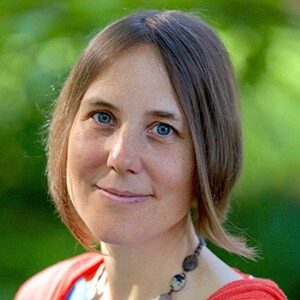
Sarah Cledwyn
is a mystic and dreamer. She has been a full-time spiritual director and energy healer since 2016. Sarah is fascinated by transformation and spiritual practice and finds dreaming, biospiritual focusing, embodiment and the natural world to be anchors of her spiritual life. Sarah works with one-on-one directees, groups, and leads courses and retreats. For the next two years she is assisting in a Lilly Grant designed to introduce contemplative practices to congregational life. Find out more about Sarah at her website at https://www.sarahcledwyn.com.
Our Sponsors
Publisher: Spiritual Directors International
Executive Director: Rev. Seifu Anil Singh-Molares
Editor: Steven Crandell
Production Supervisor: Ann Lancaster
Submissions: [email protected]
Advertising: [email protected]
Vínculos is published four times a year. The names Spiritual Directors International™, SDIWorld™, and SDI™ and its logo are trademarks of Spiritual Directors International, Inc., all rights reserved. Opinions and programs represented in this publication are of the authors and advertisers and may not represent the opinions of Spiritual Directors International, the Coordinating Council, or the editors.
We welcome your feedback on any aspect of this issue of Vínculos, or on SDI as a whole. Please send your comments to [email protected].

SDI es el hogar del compañerismo espiritual
PO Box 3584
Bellevue, WA 98009





